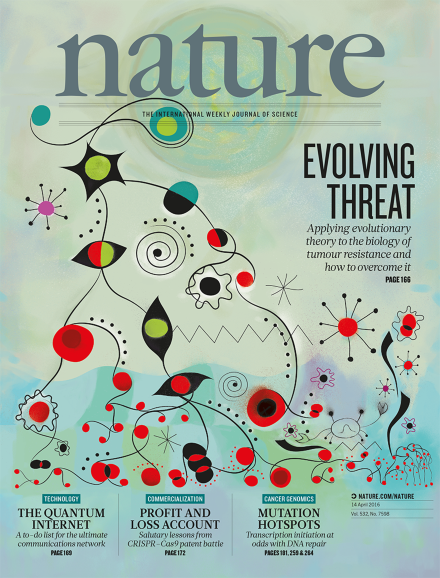Volume 532 Issue 7598, 14 April 2016
Editorial
World View
Research Highlights
Seven Days
News
Correction
News Feature
Comment
Books & Arts
Correction
Correspondence
Obituary
News & Views
Article
Letter
Corrigendum
Retraction
Technology Feature
-
The tumour trail left in blood
Collection:

